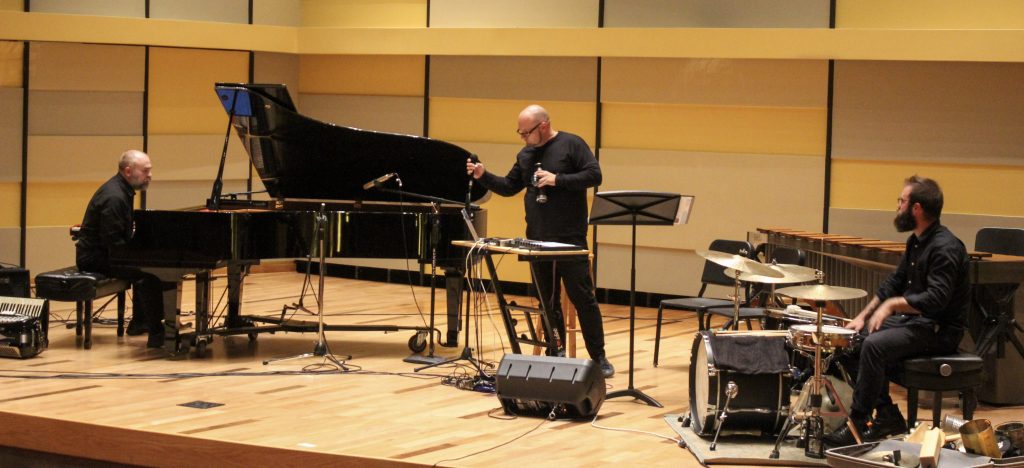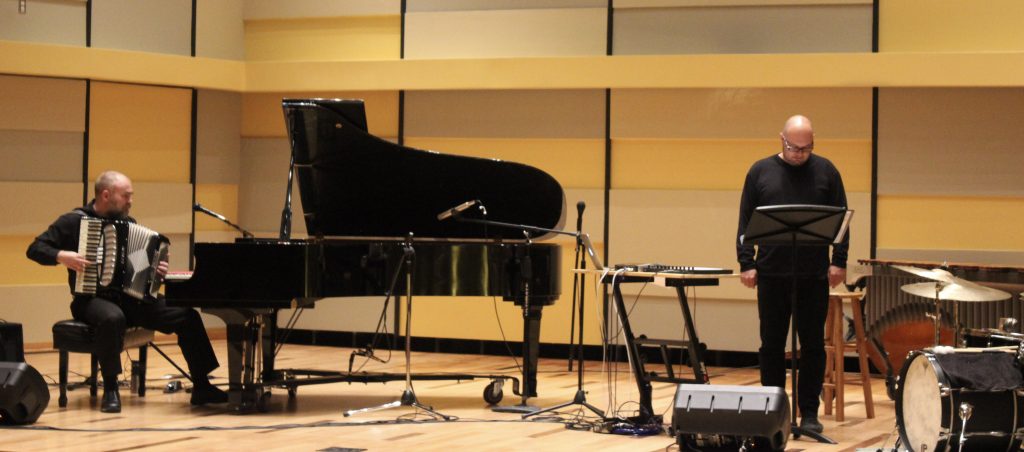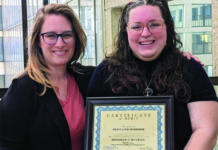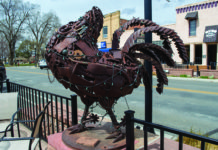Improvisational vocals, experimental beats, and a song from Sesame Street marked the Colorado Mesa University (CMU) guest artist performance of “Sacred/Profane,” featuring University of Denver professor Conrad Kehn and independent composer Evan Mazunik.
Held in Love Recital Hall on Sept. 25, the program, featuring eight songs and flipped music on its head. Kehn was on vocals and laptop, while Mazunik was on the keyboard and accordion. Guest Sean Hamilton was on drums.

Kehn eschewed traditional singing, for the most part, in exchange for more experimental sounds.
“[Improvisational vocals] means that I can use my voice in more ways than most ‘singers’ would think of using it,” Kehn said. “That doesn’t mean I don’t or won’t sing, but there is so much more that can be done – all the weird noises you made as a kid, mimicking the sounds around you, it really is just giving myself the freedom to make any sound I want to.”
Freedom indeed. The song “O Death” saw Kehn recording his voice, and using laptop manipulation to reverberate the vocals across the auditorium. Mazunik, instead of playing piano, laid on the ground, occasionally changing positions.

“The Road to Jericho” had Mazunik playing a slower piano melody, with Kehn repeating the phrase “we want to talk” over and over, for a few minutes. “Dichter-Interstitialiebe,” a collection of a few different melodies, was heavy on the dissonance.
“We’re showcasing the breadth of our backgrounds and experiences as musicians with this set of music,” Mazunik said.
The Sesame street song, titled “I Love Trash” by Oscar the Grouch, started off in the vein of the original song, before turning into something unexpected, and completely different.
Hamilton abruptly paused at the set halfway through the song, and got out a few tins filled with coins and metal trash. Kehn walked over to the cymbals and ran the microphone over them to produce a creaky sound, all while Hamilton rooted through the coins and metal, spreading them across the drum kit. Mazunik reached into the grand piano and started plucking the strings physically.

Elias Born from The Criterion 
Elias Born from The Criterion
“[I have] a catalog of sounds I know I can make and like to make. What happens after that is determined by the moment,” Kehn said. “I want [audiences] to be challenged but also find moments of beauty and inspiration. We have very intentionally mixed traditional and familiar music ideas with things that go way off the map.”
“System Refresh” featured members of the Colorado Mesa Student Ensemble joining the stage, and showcased what is called “Soundpainting.”

“Soundpainting is a sign language for live composition created by Walter Thompson. Each gesture signed by the composer/conductor indicates the type of material desired of the performers,” Mazunik said. “The signs could indicate specific parameters (ex. volume, tempo, etc.) or they could serve as inspiration for a more open-ended interpretation.”
Mazunik held up his fingers for the Soundpainting, and the Ensemble responded by playing their interpretation of what he wanted. It was improvisational, save for a few guidelines.
The performance by Kehn, Mazunik, Hamilton, and the CMU Student Ensemble was experimental, different, and blurred the boundaries between music genres.

“From Gregorian chant to Kentucky hollers, Schumann to Nick Cave, the boundaries between styles and composers are fuzzy for us. What ties them all together is a deep human expression of longing, a desire for connection that spans across various time periods and geographies,” Mazunik said.






